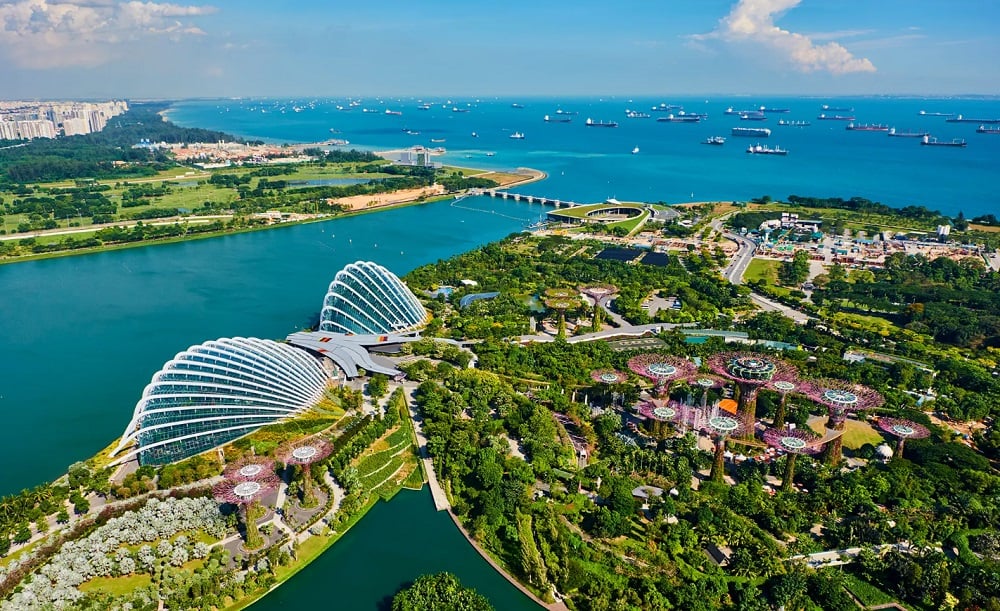
International experience in green transition
In reality, green transformation in the world does not have a single model, but is a flexible application depending on the institutional conditions, development and strategic goals of each country... However, there are a number of models that clearly demonstrate the effectiveness of green transformation, in which the experience from countries such as Germany, Korea, Denmark, Singapore, China and the Nordic countries provides many lessons for Vietnam to refer to.
Germany: Energy transition linked to transparent market mechanisms
One of the experiences of the Federal Republic of Germany in the energy transition process is the close connection between renewable energy development and the construction of transparent and effective market mechanisms. Through the “Energiewende” strategy (1) , Germany has demonstrated a long-term vision and consistency in policy, aiming to gradually reduce dependence on fossil fuels, promote the use of clean energy sources, and at the same time ensure national energy security.
One of Germany's key policy tools is the feed-in-tariff mechanism, which allows private investors, households and businesses to sell renewable electricity at fixed, stable and profitable prices in the long term. In addition, the establishment of a carbon market within the framework of the European Union (EU) has created an effective economic tool to regulate greenhouse gas emissions through transparent pricing mechanisms, fair competition, while encouraging technological innovation and increasing energy efficiency... Compared to 1990, Germany reduced carbon emissions by 27.7% by the end of 2017, surpassing the Kyoto Protocol target of 21% by the end of 2012. The country aims to reduce CO2 emissions by 80% - 95% by 2050 compared to 1990 (2) . Germany's experience shows that a successful energy transition cannot be separated from the construction and operation of a transparent, stable and highly predictable energy market.
South Korea: Green recovery after the pandemic linked to sustainable job creation
South Korea is one of the leading countries in integrating the goal of economic recovery after the COVID-19 pandemic with a strategy of green growth and sustainable job creation. In 2020, the Korean Government announced the “Korean New Deal” plan; in which, the “Green New Deal” with a total budget of more than 73 billion USD for the period up to 2025 is one of the three main pillars, along with the “Digital New Deal” and “Strengthening the social safety net”.
On that basis, Korea aims to both recover the economy after the pandemic and transition to a low-carbon development model, creating thousands of green jobs in the fields of renewable energy, sustainable transport, environmentally friendly urban renovation and high-tech industry. Notably, the Korean government has not only stopped at financial support but also proactively restructured labor and vocational training policies to ensure that workers can adapt to new green industries. The combination of large-scale public investment and effective market orientation has helped Korea achieve the "dual goal": economic recovery and labor restructuring in a sustainable, inclusive direction... Lessons from Korea show that green recovery cannot be just a slogan, but needs to be concretized by clear strategies, consistent policies and strong commitments from the Government.
Denmark: Socializing renewable energy and developing green communities
Denmark is a typical country in effectively combining the energy transition strategy with the democratization process and sustainable community development. Not only aiming at reducing greenhouse gas emissions and increasing the proportion of renewable energy, Denmark also emphasizes the proactive and active role of people in participating in the production, distribution and consumption of clean energy. This is an institutional approach, laying the foundation for the development of a real, comprehensive and long-term green community.
Denmark has been promoting community-owned wind power projects, especially in rural and coastal areas, since the 1980s. Legal regulations requiring investors to reserve a portion of their shares for local residents have helped people become real shareholders of wind farms. In addition to participating in investment, people also have the right to co-manage, supervise operations and share profits from the energy generated by the community. Along with that, the model of energy cooperatives is strongly encouraged, thereby forming self-sufficient energy communities, contributing to promoting autonomy, social cohesion and raising awareness of environmental protection.
Denmark's socialization of renewable energy production has brought many practical benefits: First , high social consensus in implementing energy projects, minimizing conflicts of interest between the government, businesses and people - a major challenge for many developing countries; Second , integrating energy policy with rural development and social welfare policies has increased trust in institutions, spread green consumption culture and improved the overall quality of life for people; Third , this process contributes to diversifying ownership and operation models, helping the energy system become more flexible and adapt better to market and environmental fluctuations.
Denmark's experience shows that promoting the role of citizens - through appropriate, transparent and fair institutional design - is the key to ensuring the sustainability of the green transition.
Singapore: Urban governance thinking associated with green development
With an area of just over 700km² and a population of over 5.9 million people (3) , Singapore is a typical country for the overall planning thinking that combines urban modernization and environmental protection. Although Singapore faces many challenges in terms of living space, environment and urban infrastructure, this island nation chooses the "compact urban" development model that integrates multi-functional planning, focuses on preserving nature within the city, optimizes land use through technology and smart institutions instead of developing in a widespread direction towards expanding boundaries.
Since the 1960s, Singapore has considered the environment an essential part of its national development strategy. The “City in a Garden” plan, later upgraded to “City in Nature”, has become a consistent guideline in urban planning. The Singapore Green Plan 2030 outlines ambitious and specific goals to advance Singapore’s national agenda for sustainable development. The main pillars of the Singapore Green Plan 2030 include targets that touch almost every aspect of life: 2026 target: Develop more than 130ha of new parks and renovate about 170ha of existing parks with more lush vegetation and natural landscapes; 2030 target: Double the annual tree planting rate from 2020 to 2030, to plant 1 million more trees across Singapore; increase the land area of nature parks by more than 50% compared to 2020; every household will be within 10 minutes' walk of a park; 2035 target: Add 1,000ha of green space; sustainable living; a green citizen who consumes and wastes less energy (4) …
In fact, more than 40% of Singapore's land area is now covered by greenery, with a network of parks, ecological corridors and urban forests that are closely planned and linked. In particular, Singapore has strongly developed green buildings with BCA Green Mark certification - an energy and environmental assessment system that is equivalent to international standards. As of 2023, more than 49% of the total floor area of buildings in Singapore has been certified as green buildings. At the same time, the island nation has invested extensively in ecological infrastructure systems, such as artificial water reservoirs, green roofs, vertical walls covered with trees and the NEWater water recycling system - allowing the reuse of more than 40% of the country's water consumption.
Singapore’s success is a clear demonstration that urban development does not necessarily come at the expense of the environment. On the contrary, through a proactive, open and scientific state governance mindset, it is possible to establish a development model that harmonizes economic growth, improving the quality of life and protecting natural resources.
China: Large-scale green transition and the role of the facilitative state
As the world’s largest CO₂ emitter, China has made a strong shift to green growth, aiming to peak emissions by 2030 and become carbon neutral by 2060. China has established a domestic carbon market since 2021, the world’s largest, to help reduce emissions in heavy industries. Its state-led model of facilitating and supporting technological innovation has enabled China to both promote green energy development and play a key role in global supply chains.
2023 saw China’s shift in renewable capacity additions, driven by the solar PV market. Annual global renewable capacity additions grew by nearly 50% to approximately 510 gigawatts (GW) in 2023, the fastest growth rate in two decades. In 2023, China commissioned as much solar PV as the rest of the world did in 2022, while its wind capacity additions also increased by 66% year-on-year. Globally, solar PV alone accounted for three-quarters of the world’s renewable capacity additions (5) . With strong policies from the Central Government, China has built a comprehensive clean energy supply chain, from exploitation, production, technology to distribution.
Nordic countries: Reinforcement between green transition and sustainable development
Nordic countries such as Denmark, Finland, Norway, and Sweden are considered exemplary models in sustainable green transformation as they harmoniously combine environmental protection and social equity. These countries are leading the world in building a zero-carbon growth model while creating a sustainable consumption ecosystem.
According to McKinsey research, the green transition has the potential to add up to $140 billion to the Nordic gross domestic product (GDP) and create nearly one million new jobs. Thanks to a harmonious combination of natural advantages and strategic policy orientation, many countries in the region have become role models in developing zero-emission products.
Although Northern Europe has great potential for renewable energy from offshore wind (Denmark), abundant river and lake systems (Norway and Finland), etc., the decisive factor for success is still the proactive and consistent policies of the governments. In 2019, the five Nordic countries signed a joint declaration on carbon neutrality, clearly demonstrating their strategic vision and commitment to long-term action.
Denmark is a pioneer in wind energy, with a remarkable track record from the first megawatt turbine in 1978 to the first offshore wind farm in 1991. Today, more than 70% of Denmark’s electricity comes from wind, solar and biomass. The country aims to reduce emissions by 70% by 2030 compared to 1990 and to become carbon neutral by 2050. In particular, the Power-to-X (PtX) policy and investment in green hydrogen demonstrate Denmark’s strong commitment to transformation in the energy and transport sectors.
Sweden is the largest economy in Northern Europe, maintaining a 75% share of its electricity from hydroelectric and nuclear power. With an effective carbon tax, Sweden has demonstrated that cutting emissions does not mean slowing growth. The Climate Act 2021 sets a target of carbon neutrality by 2045, with at least 85% of emissions reductions being done domestically, with the remainder handled through carbon capture and international cooperation.
Although Norway is a major oil and gas exporter, its electricity system is almost 100% renewable thanks to hydropower. The country is also known as the “energy battery” of the region, thanks to its ability to regulate water in its reservoirs. In 2021, electric vehicles accounted for 65% of all cars sold here. Norway aims to reduce emissions by 55% by 2030 and develop an additional 30 GW of offshore wind power by 2040 – roughly equivalent to its current total electricity production.
With 75% of its territory covered by forests, Finland focuses on developing biomass energy and energy from industrial by-products. Currently, more than 50% of its electricity comes from renewable sources. With the goal of being carbon neutral by 2035, Finland aims to become a “carbon negative” country thanks to carbon capture technologies.
The Nordic countries have been playing a pioneering role in green transformation and sustainable development. The region’s success is a combination of natural resources, strong public policies, responsible consumer markets and advanced technology systems. These experiences not only provide valuable lessons for developing countries, but also confirm that economic development can go hand in hand with environmental protection and improving the quality of life for people.
Some suggestions for Vietnam
In recent times, Vietnam has issued many legal documents and policies related to green transformation, focusing on green growth, green economy and sustainable development. Some of the documents include: 1- Law on Environmental Protection (2020) regulating environmental protection, including waste management, pollution control and biodiversity conservation, which is an important basis for green transformation; 2- Law on Investment (2020) regulating investment incentives for green projects, renewable energy and environmentally friendly industries; 3- Law amending and supplementing a number of articles of the Law on Economical and Efficient Use of Energy (2025): Encouraging businesses and people to use energy efficiently, minimize waste and emissions; 4- The National Strategy on Green Growth for the 2021-2030 period sets out green growth goals, including reducing greenhouse gas emissions, using resources efficiently, and developing a green economy; 5- The National Action Program on Sustainable Production and Consumption for the 2021-2030 period encourages sustainable production and consumption, minimizing waste and pollution...
In addition, Vietnam has clearly demonstrated its political determination in responding to climate change through its commitment to achieving net zero emissions by 2050 at the 26th Conference of the Parties to the United Nations Framework Convention on Climate Change (COP26). This is an important step, reflecting the inevitable development trend towards a green economy, while opening up opportunities to restructure the growth model towards low emissions, efficient use of resources and enhanced national competitiveness.
However, the current state of the energy system shows that Vietnam is still heavily dependent on fossil fuels. According to the Vietnam Economic Annual Report 2024 by the Vietnam Institute for Economic and Policy Research (VEPR), the current electricity structure mainly consists of coal power (33%), hydropower (29%), renewable energy (26%) and gas - oil (9%). The near-exhaustion of domestic resources has caused Vietnam to gradually shift to a net energy import status, creating great pressure on energy security, finance and the environment.
In this context, renewable energy development has become a priority not only to reduce emissions but also to ensure sustainable supply for domestic development needs. It is necessary to soon complete mechanisms, policies and technical infrastructure to promote investment in this field, including measures such as preferential credit, tax support, administrative procedure reform and building a transparent and stable legal framework.
In addition to diversifying supply sources and improving energy efficiency, changing consumer behavior also needs to be focused on to save resources, reduce social costs and increase resilience to climate shocks. The Vietnam Energy Outlook Report 2024 jointly published by the Ministry of Industry and Trade and the Danish Government emphasized that if the transition process is not accelerated, Vietnam will have to bear large costs in the long term. The report recommends that Vietnam should reach peak emissions before 2030 and increase investment in renewable energy from 2025.
Meanwhile, international scientific reports such as the Intergovernmental Panel on Climate Change (IPCC) in 2023 warned that global temperatures have increased by 1.1°C compared to pre-industrial levels and could exceed 1.5°C in the next two decades if drastic action is not taken. Increasingly severe climate changes pose global challenges to energy security, food security and sustainable development. Therefore, green transformation is no longer an option but a mandatory path for all countries. According to the Organization for Economic Cooperation and Development (OECD, 2020), this is not only an environmental responsibility but also an opportunity to create a new development model based on innovation and long-term economic efficiency.

Vietnam, with its commitment to achieve net zero emissions by 2050, is facing an urgent need to learn, inherit and effectively apply international lessons. Some experiences from countries such as Germany, South Korea, Denmark, Singapore, China and the Nordic countries suggest policies suitable for Vietnam's sustainable development conditions in the coming period:
Firstly , it is necessary to identify green transformation as a pillar in the national development strategy for the period 2021 - 2030 and vision to 2050, institutionalized in the legal system and socio-economic development plans at all levels. The orientation for national development in the period 2021 - 2030 was determined by the 13th National Party Congress to "closely and harmoniously link economic, cultural and social development with strengthening national defense, security and environmental protection..." ( 6) . Therefore, green transformation should not stop at technical industries but should become a consistent goal in regional, urban and rural planning and public resource allocation. From international experience, it can be affirmed that only when green transformation becomes a strategic goal, associated with the highest political commitment, can resources be fully mobilized.
Second , prioritize the development of renewable energy in a synchronous, effective manner with the participation of the whole society. With the advantage of natural conditions in the Central and Southern regions, Vietnam can become a renewable energy center in the region if there is a breakthrough policy. With the rapidly increasing demand for electricity and the increasing pressure on environmental protection, Vietnam's construction of a transparent competitive electricity market like Germany's experience, along with investment incentives in renewable energy, will be the right direction to gradually reduce dependence on fossil energy sources. To do so, Vietnam needs to urgently complete the mechanism for auctioning and bidding for solar and wind power in a public and transparent manner; promote the development of biomass power in key agricultural production areas. The energy cooperative model in Denmark shows that if local people are allowed to participate in investing and operating renewable energy systems, social and economic efficiency will increase significantly. In addition, it is necessary to design a stable output support mechanism to attract businesses to invest long-term.
Third , science and technology development and digital transformation must become key drivers for green transformation. Vietnam needs stronger incentive policies for businesses to invest in research and development of green technologies, such as energy batteries, waste treatment technology, electricity storage, energy-saving construction and environmentally friendly materials. Lessons from Korea and Singapore show that integrating digital technology in resource management, pollution monitoring and green infrastructure development can help reduce operating costs and increase resource efficiency. In the context of large cities such as Hanoi and Ho Chi Minh City in Vietnam facing air pollution, lack of clean water and increasing solid waste, Singapore's experience is an important suggestion for success in green urban development and circular economy.
Fourth , it is necessary to build a green financial mechanism and a domestic carbon market. According to the World Bank's Climate and Development Country Report for Vietnam: Reconciling Economic Development with Climate Risks: It is estimated that by 2040, Vietnam will need to invest about 368 billion USD in infrastructure, new technologies and social programs to ensure a fair transition towards a zero-emission and climate-resilient economy (7) . Therefore, in addition to state resources, it is necessary to strongly mobilize the private and international sectors through green bonds, sustainable investment funds and public-private partnerships. At the same time, Vietnam needs to soon complete the institution to operate the domestic carbon market. China effectively uses public policy tools and state investment to build a green supply chain and support enterprises in technological innovation. Vietnam can refer to this model to both attract foreign direct investment (FDI) in the green sector and form national enterprises leading the renewable energy market.
Fifth , developing green human resources and raising public awareness are conditions to ensure sustainability and social consensus for the transformation process. It is necessary to integrate environmental education into general education, vocational training and university programs. At the same time, encourage multimedia communication to spread accurate information about green transformation, avoiding "fake green" (greenwashing). Lessons from some Nordic countries show that the role of social justice in green transformation is irreplaceable, especially in the context of Vietnam still having development gaps between regions. The proactive and voluntary participation of people and businesses will be a solid guarantee for the practical effectiveness of greening policies./.
---------------------------
(1) Energiewende is a German energy transition strategy aimed at reducing carbon emissions by switching to renewable energy sources, mainly wind and solar power. This German strategy not only focuses on reducing CO2 emissions but also aims to build a sustainable, efficient and secure energy system.
(2) Á. Pelegry, E. Ortiz Martínez, and I. Menéndez Sánchez, (2016). The German Energy Transition (Energiewende) Policy, Energy Transformation and Industrial Development, Ger. Energy Transit. (Energiewende). Policy, Energy Transform. Ind. Dev., no. May, p. 203
(3) Nguyen Van Cuong: Introducing the law-making process in Singapore, Ministry of Justice, December 18, 2024, https://www.moj.gov.vn/qt/tintuc/Pages/nghien-cuu-trao-doi.aspx?ItemID=2675
(4) See: Singapore Green Plan 2030: Our Key Targets for the Green Plan, https://www.greenplan.gov.sg/targets/?utm_source
(5) See: Renewables 2023 (roughly translated: Renewable energy 2023), https://www.iea.org/reports/Renewables-2023/executive-sumMary?utm_source
(6) Documents of the 13th National Congress Congress , Publishing House. National politics truth, Hanoi, 2021, t. I, p. 216 - 217
(7) World Bank: National Climate Report and Development to Vietnam: Concert economic development with climate risks, July 14, 2022, https://wwwbank.org/news/video/2022/07/14/vietnam-country-climate-and-delopment-report-recciling-economic-ecmeter-with climate
Source: https://tapchicongsan.org.vn/web/guest/kinh-te/-/2018/1121102/kinh-nghiem-quoc-te-ve-chuyen-doi-xanh-va-goi-mo-doi-voi-viet-Nam.aspx



![[Photo] General Secretary To Lam attends the 80th Anniversary of the Cultural Sector's Traditional Day](https://vphoto.vietnam.vn/thumb/1200x675/vietnam/resource/IMAGE/2025/8/23/7a88e6b58502490aa153adf8f0eec2b2)
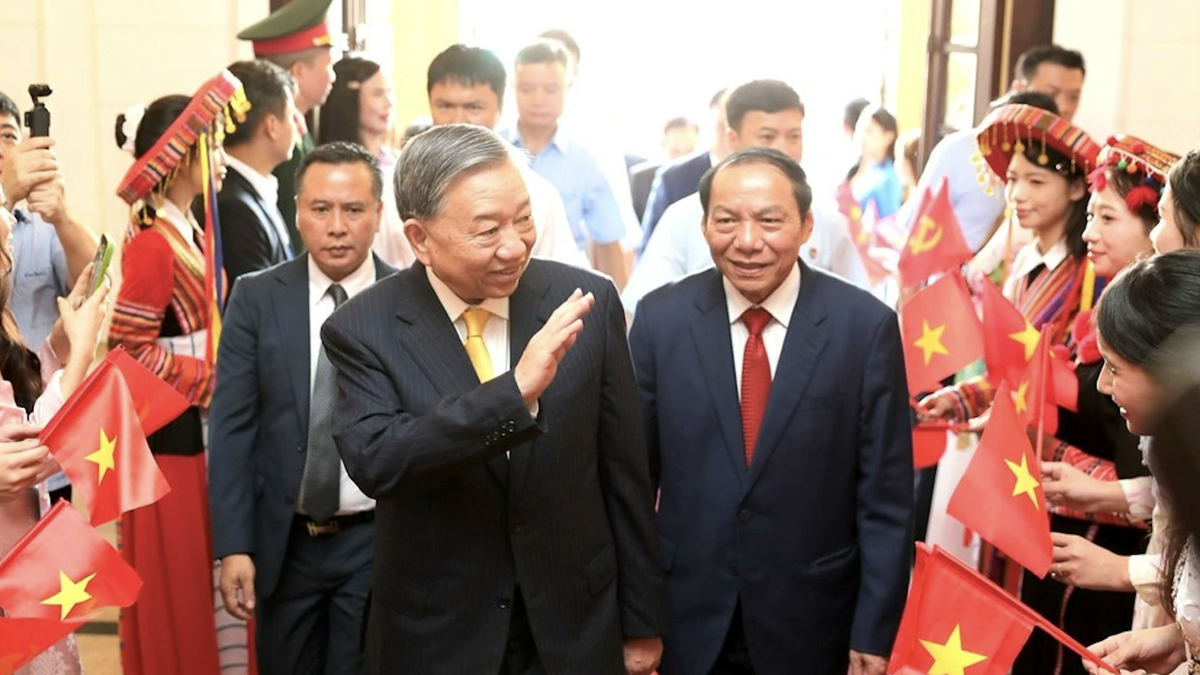



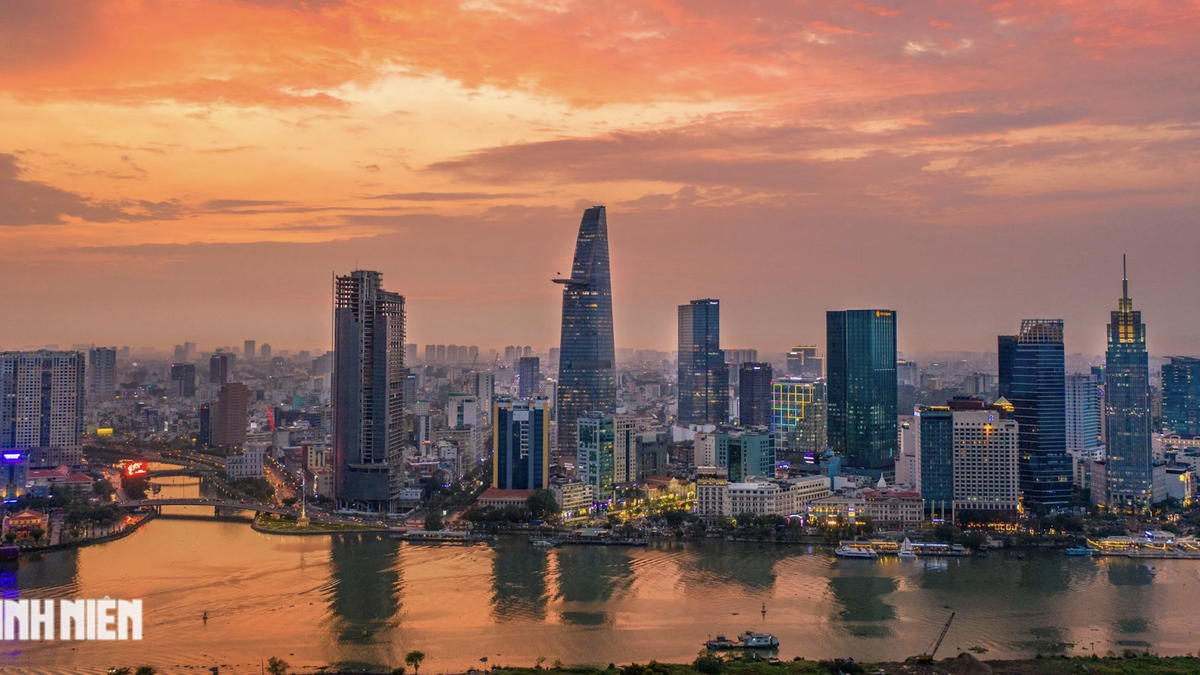











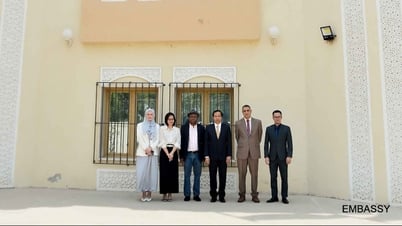














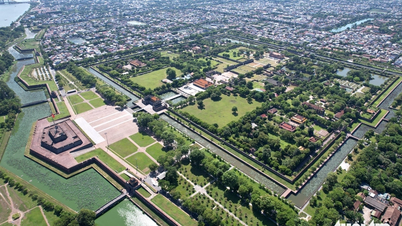































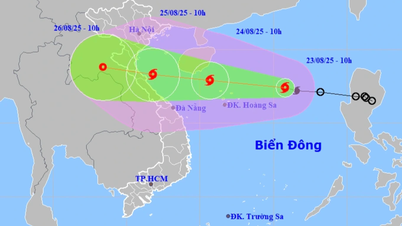


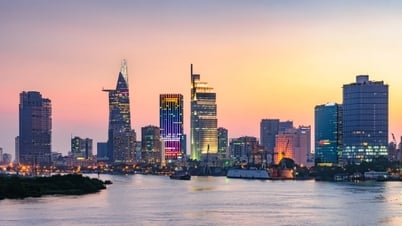







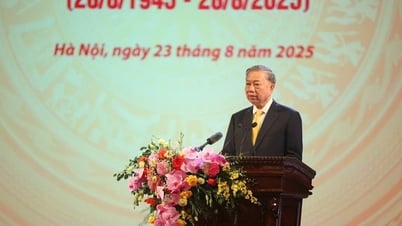
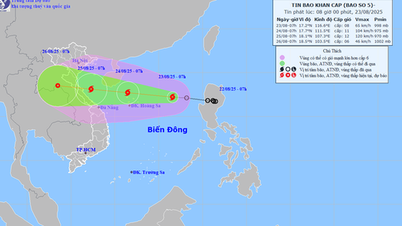




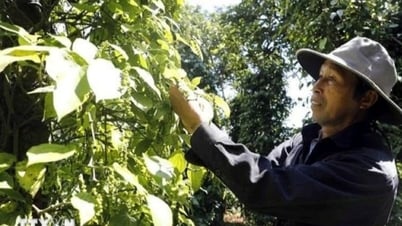










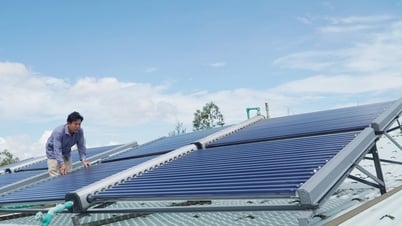








Comment (0)